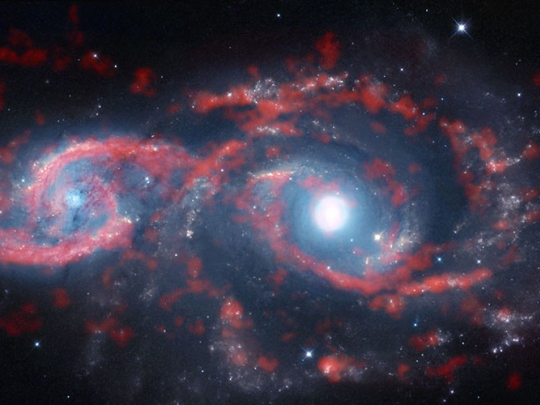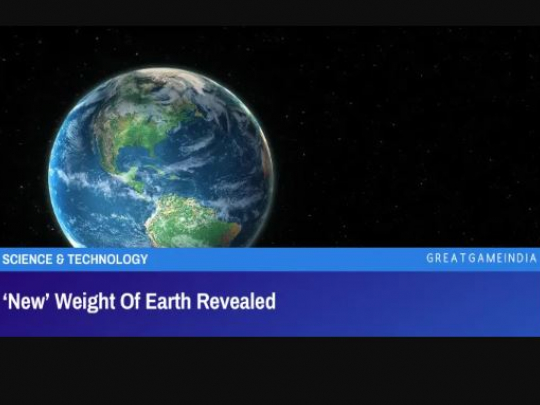‘Tsunami of stars & gas’: Galaxies collide in whirling mass of space debris (PHOTOS)

One of the world’s most powerful telescopes has picked up a mind-blowing celestial star and gas show that occurs when galaxies collide with one another in deep space.
Run with the help of experts from the European Southern Observatory, the US-funded National Radio Astronomy Observatory and other international space agencies, the Atacama Large Millimeter Array sits high in the Chilean Andes.
Located 5,000 meters (16,400ft) above sea level on the Chajnantor plateau, the telescope’s 66 precision antennas have captured the moment a galaxy known as IC 2163 glanced off another named NGC 2207.
There are 192 bases for 66 #ALMA antennas so they can be relocated according to the requirements of the observations. © J. Guarda - ALMA pic.twitter.com/8YewXPyt9d
— ALMA Observatory (@almaobs) October 24, 2016
Using the telescope’s incredible light sensitivity, astronomers have been able to trace the movement of particles crashing into each other.
The collision – 114 million light-years away from Earth – triggered a “tsunami of stars and gas,” according to the National Radio Astronomy Observatory.
Pictures composed with the help of ALMA and the Hubble Space Telescope show carbon monoxide spirals and present an astonishing view of an eye-like gas and star formation.
The mixture of “radial and azimuthal streaming of gas” creating the stunning shape is the subject of a study published recently in Astrophysical Journal, led by researcher Michele Kaufman.

She said that although there are previous records of intergalactic collisions, “only a few galaxies with eye-like, or ocular, structures are known to exist.”
“Galactic eyelids last only a few tens of millions of years, which is incredibly brief in the lifespan of a galaxy,” Kaufman said in a statement about the discovery.
“Finding one in such a newly formed state gives us an exceptional opportunity to study what happens when one galaxy grazes another.”
Bruce Elmegreen, co-author of the study, told the official ALMA website how the impact could be compared to longshore drift back here on earth.
“What we observe in this galaxy is very much like a massive ocean wave barrelling toward shore until it interacts with the shallows, causing it to lose momentum and dump all of its water and sand on the beach,” he said.
The study states how the colliding gases resulted in “elevated turbulence,” with US astronomers reporting carbon monoxide movement at “speeds in excess of 100km a second.”
Earlier this year, astronomers used the ALMA telescope to formulate images of a stunning galaxy cluster known as a Lyman-alpha blob.

- Source : RT















